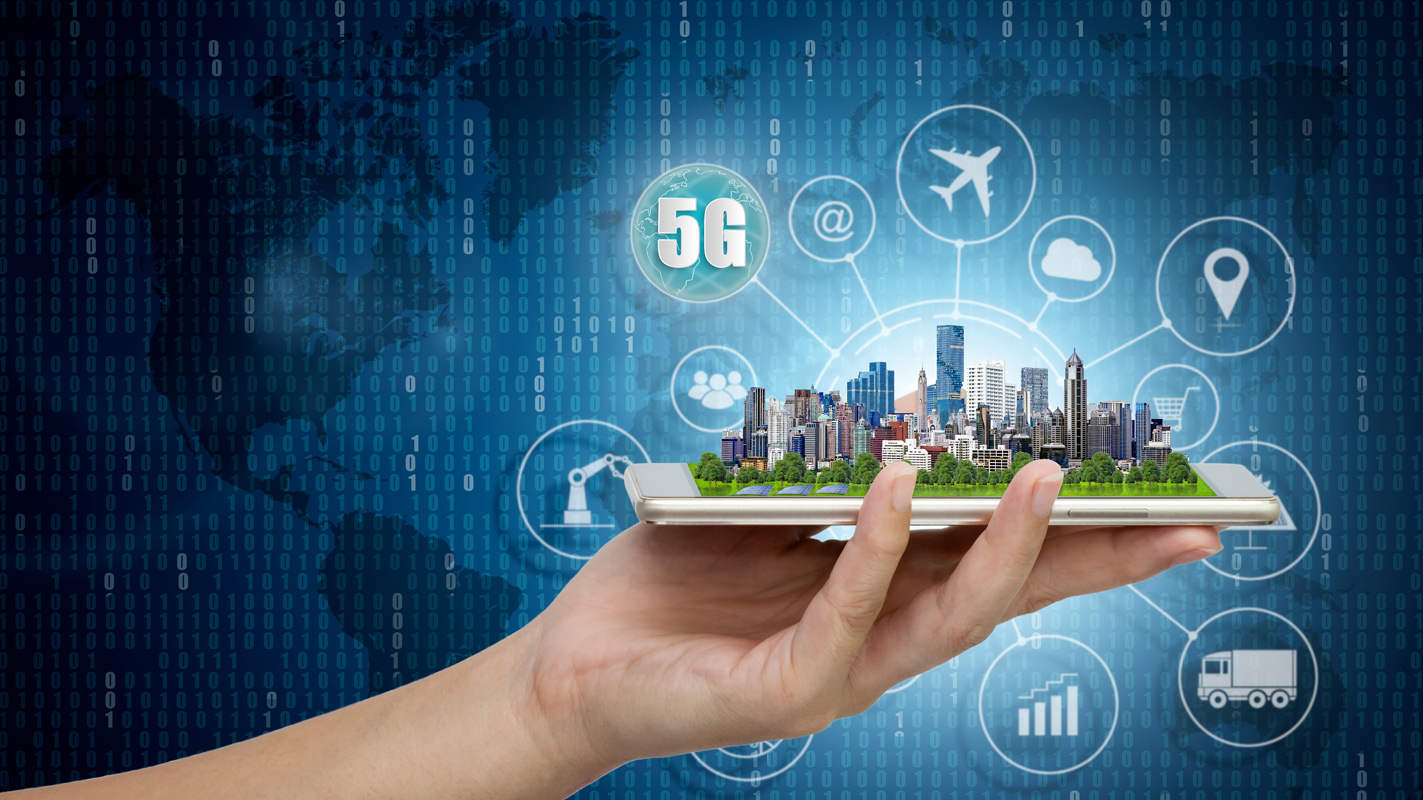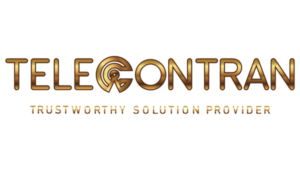Modern Telecommunication and Development towards 5th Generation Mobile Network
5 DAYS
INSTRUCTOR LED WORKSHOP
“OUR COURSES CAN BE SPECIALLY TAILORED TO ADDRESS YOUR REQUIREMENT – TELECONTRAN”

COURSE OBJECTIVES
The surge in mobile traffic is primarily driven by the proliferation of mobile devices and the accelerated adoption of data‐hungry mobile devices. Mobile traffic is still growing and the need for more sophisticated broadband services will further push the limit on current standards to provide an even tighter integration between wireless technologies and higher speeds. The evolution towards 5G is considered to be the convergence of Internet services with legacy mobile networking standards with very high connectivity speeds.
This workshop is a comprehensive 5 day course covering the major and modern wireline and wireless technologies, including WiFi, LTE, 5G Networks, Cloud Computing, Data Centers, IoT etc. as well as a concise synopsis of the key areas associated with the 5G System, with focus on the concepts and drivers, the 5G New Radio and NG-RAN, the end to end system architecture, Small cells, QoS as well as Security aspects.
After successful completion of this 5 day workshop, participants will be able to
- Understand the evolution of Telecommunications and the global trends in the telecom developments.
- Assess the major developments in Mobile Network technology as well as main features and limitations of the major current and future Fixed Network concepts
- Gain knowledge in modern IP and cloud based technologies such as, VOIP, Cloud computing, Data Center, SDN/NFV, IOT etc.
- Understand a concise and accessible explanation of the underlying technology and standards for 5G technology
- Learn different aspects of emerging system and network architectures, including Ultra-Dense Networks (UDN), Software-Defined Networks (SDN), Device-to-Device (D2D) communications.
- Describe new 5G Radio Access Technology Interworking with LTE as well as New Radio (NR), Cloud RAN: Cloud- Radio Access Network (C-RAN) and Next Generation (NexGen) architecture.
- Paint a more focused 5G technology roadmap, putting in place a clear set of challenges and requirements.
COURSE CURRICULUM
This course is specially designed for Radio Network Planners, Transmission Engineers, Core Network Engineers, Project Managers, RF Engineers & Technicians and frequency spectrum and policy makers from Regulators, in a word, anyone looking for an understanding of the technologies and interworking requirements of the next generation of cellular communications.

What is Telecommunication?
- Evolution and Telecom History
- Its Uses, Service and Application
- System Architecture
- Telecom Standardization
- Telecom governing bodies
Telecom Network Basics
- Communication System
- Frequency Spectrum
- Switching Systems
- Signaling Systems
- Transmission Systems
Transmission Medium
- Cable – Copper Cable
- Types of Copper Cable
- Radio
- Microwave Transmission
- Satellite Transmission
- Satellite Orbit
- VSAT
- Fiber Optics
- Components and Modes of Fiber Optics
- GPON and FTTx
- NG-PON2
- Submarine Cable
OSI – Open System Interconnection
- Analogy of OSI
- Peer to Peer Processes
- OSI 7 Layers
Data Communication
- Data Communication Model
- Network Topologies
- Local Area Network (LAN)
- Metropolitan Area Network (MAN)
- Wide Area Network (WAN)
- Carrier Ethernet
- Data Communication Equipment – Router, Switch, Bridge, Repeater etc.
- DSL and ADSL
- MPLS
Modern Broadband Communications
- Standard Ethernet
- FAST / Gigabit / 10 Gigabit Ethernet
- 40/100 Gigabit Ethernet
- Terabit Ethernet
- WiFi Certification and Standards
- Ad hoc WiFi
- Long Range WiFi
- WiFi Security
- LiFi
- Super WiFi
- WiGig
The Internet and Internet Protocol
- The Internet Concept
- TCP/IP Protocol suite
- IP Addressing
- IP Classes
- IPv6
- IPv4 vs IPv6
- Routing
- Domain Name System (DNS)
- Internet Applications
Cloud Computing
- What is a Cloud
- History and Evolution of Cloud
- Cloud Servicing Models
- Cloud Deploying Models
- Advantages and Challenges of Cloud
- Cloud Providers
Data Center
- Data Center Overview
- Data Center Architecture
- Data Center Services
- SDN/NFV
Digital Broadcasting System
- Digital Video Broadcasting (DVB)
- Cable TV (CATV)
- Hybrid Fiber-Coax (HFC) Systems
- IPTV
IP Telephony
- SIP
- Voice over IP (VoIP)
- VOIP Call Flows
- SIP/RTP
Cellular Network
- Network Evolution
- Network Architecture
- Radio Frequency and Frequency Reuse
- Cell Planning
- Handover
- Transmission and Transmission Channels
- Core Network and OSS
- Subscriber Identity Module (SIM)
- Messaging Techniques – SMS, MMS
GSM and GPRS / EDGE
- GSM Carrier Frequency
- GSM Network Architecture
- Network Components
- GPRS/EDGE Network Architecture
- GPRS Protocols supported over GSM
- Benefits of EDGE over GPRS
3G Network – UMTS/WCDMA
- UMTS / WCMA Principles
- Network Architecture
- UMTS / WCDMA Services
- UMTS Frequency Bands
- UTRAN
- UMTS Core Network
- Network Migration from GSM/GPRS to UMTS
- CDMA2000 1X (IS-2000) and CDMA2000 1xEV-DO
HSPA
- Network Overview
- Benefits of HSPA over UMTS
- Evolution to HSPA+
LTE and 4G Network and Advancement towards 5G Network
- LTE Terminology
- Network Architecture
- LTE Spectrum
- LTE TDD and LTE FDD
- LTE EPC
- IMS
- 3GPP IoT Solutions
- 4G – LTE Advanced
- Introducing 5G
- 3GPP Standards: Release 15
- HetNet Concept in 5G
Internet of Things (IoT) and Machine to Machine (M2M)
- M2M Applications
- Network Architecture
- IoT Applications
- Enabling technologies for IoT
- NB-IoT / SigFox / LoRaWAN
- Government regulations on IoT
- IoT Security
Wireless Radio System Applications
- Digital Broadcasting
- Video Surveillance – Closed Circuit TV (CCTV)
- Public Mobile Radio (PMR) and Public Access Mobile Radio (PAMR)
- Terrestrial Trunked Radio Access (TETRA)
- Remote Terminal Unit (RTU)
- Near Field Communication (NFC)
- Bluetooth
- ZigBee
- Home Automation – Smart Home
- Bitcoin and Blockchain
- Femto Cell
- WiMax
- Heterogeneous Network
Introduction to 5G Technology
- 5G Drivers
- Evolution of LTE / 4G to beyond 4G
- 3GPP Standardization Roadmap
- Key Principles
- Objectives of 5G
- The ITU IMT-2020 5G requirement
- eMBB, URLLC and mMTC
- 5G in Different countries around the world
3GPP 5G Architecture
- 5G System Architecture
- Function of different 5G components
- 5G Access Network
- NG-RAN
- 5G Core Network
- The new service-based architecture (SBA)
- 5G Core Network Architecture
- PDU Sessions
- Core Network Elements
- Network Virtualization
- Network Slicing
- 5G Frequency Spectrum
- ICIC and eICIC
- 5G Carrier Aggregation
- eIMTA
- Multi-access Edge Computing (MEC) and Local Area Data Networks (LADN)
- Interference Management
- Mobility Management
- Dynamic Reconfiguration
5G Internet
- IoT
- SDN / NFV
- Mobility
- QoS Control
- Emerging Approach for Resource over Provisioning
Cognitive Radio for 5G Wireless Networks: NG-RAN and New Radio (NR)
- NG-RAN Architecture
- Relevant Radio Spectrum Optimization
- Massive MIMO vs. MU-MIMO
- D2D Communications
- mmWave Radio
- NR Features
- Integration with LTE and E-UTRAN
- Beamforming and Steering
- C-RAN vs. D-RAN
- 5G RRC States
5G Small Cells
- WiFi and Femto Cells
- Mobile Data Demand Approach
- Small Cell Challenges
5G CoMP
- CoMP Enablers
- CoMP in conjunction with Ultra Dense Network
5G QoS
- QoS Flows
- 5G QoS Parameters
- QoS Handling
- Role of Network Exposure Function
- Monitoring, Provisioning and Policy/Charging capabilities
5G Mobile Cloud
- 5G Cloud Resources
- Mobile Cloud Emblers
- Network Coding
- WWAN WLAN and WPAN range
5G Security
- Security and Challenges
- Security Architecture and Domain
- 5G Authentication and Key Agreement (5G-AKA)
- HeNB Attacks
- DDOS Attacks
5G: A Smart Future
Green Flexible RF for 5G
OUR HAPPY CLIENTS
WHAT OUR CLIENTS SAY ABOUT TELECONTRAN !!
This course has given me more insight on 5G network as a whole, from introduction to Smart Cities. The presentation was well outlined and learning objectives were successfully completed.
The course covers all telecom technologies in the market specially 5G and IoT.
The Course Covers almost all about telecommunications from basic to modern telecommunications, such as IOT, 5G, Process Engineering with in just 2 days.
The course provided me a very good knowledge for the preparation of Advanced telecom technologies and specially IOT.
Excellent workshop that made me engaged during these days to learn about 5G Technology, especially the transport layer and end user experience.

